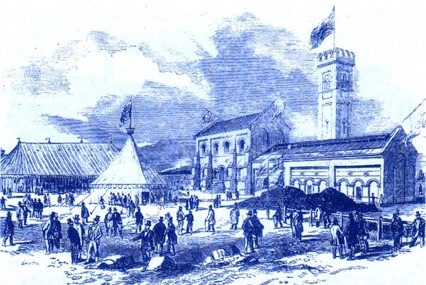In today’s modern world, where fresh water is becoming an increasingly scarce resource, it is crucial to understand the intricate relationship between waterworks and deforestation. This comprehensive article will delve into the surprising connection between these two seemingly unrelated topics. We will explore the various ways in which waterworks contribute to deforestation and how these activities impact the environment. By shedding light on this issue, we aim to raise awareness and encourage sustainable practices to mitigate the negative effects of waterworks on our precious forests.
The Role of Waterworks in Deforestation
1. Hydroelectric Power Generation
Hydroelectric power is a significant source of renewable energy worldwide. However, the construction of large dams for hydroelectric projects often leads to the destruction of vast forest areas. The creation of reservoirs behind the dams necessitates clearing extensive land, including valuable forest ecosystems. This displacement of forests contributes directly to deforestation, disrupting delicate ecological balances and displacing countless species.
2. Water Diversion Projects
Water diversion projects involve redirecting water from one area to another, typically for irrigation or industrial purposes. These projects often require the construction of canals and pipelines, resulting in the clearing of forests and habitat destruction. The diversion of water can lead to significant changes in local ecosystems, further exacerbating deforestation and the loss of biodiversity.
3. Logging and Timber Industry
The timber industry heavily relies on waterways to transport logs from forests to processing facilities. The creation of logging roads and the use of water channels for log transportation often involve substantial deforestation. Additionally, logging operations can lead to soil erosion, further degrading forest ecosystems. Sustainable logging practices and the implementation of responsible forestry management are crucial to minimize the negative impact on forests.
4. Mining and Extractive Industries
Mining and other extractive industries require substantial amounts of water for their operations. Extracting minerals like gold, copper, and coal often involves clearing vast forest areas to access the resources beneath. The associated infrastructure, such as roads and processing plants, also contributes to deforestation. The detrimental effects of these industries on forests are far-reaching, including soil degradation, water pollution, and habitat destruction.
The Environmental Impacts of Deforestation
1. Loss of Biodiversity
Forests are home to an incredible array of plant and animal species, many of which are endemic and found nowhere else on Earth. Deforestation disrupts these delicate ecosystems, leading to the loss of biodiversity. With each cleared forested area, countless species lose their habitat, pushing them closer to extinction. Protecting our forests is crucial for preserving the rich tapestry of life on our planet.
2. Climate Change
Forests play a vital role in regulating the Earth’s climate by absorbing carbon dioxide and releasing oxygen through photosynthesis. Deforestation disrupts this balance, as trees act as carbon sinks. When forests are cleared, carbon stored in their biomass is released into the atmosphere, contributing to greenhouse gas emissions and accelerating climate change. Preserving forests is essential for mitigating the impacts of climate change and maintaining a stable environment.
3. Soil Erosion and Water Cycle Disruption
Forests play a vital role in maintaining soil fertility and regulating water cycles. The roots of trees help bind soil together, preventing erosion. Deforestation removes this natural protection, leading to soil degradation and increased vulnerability to landslides and flooding. Furthermore, forests act as natural water filters, ensuring the quality and quantity of freshwater resources. The loss of forests disrupts these processes, affecting water availability and quality.
4. Displacement of Indigenous Communities
Many forested areas are home to indigenous communities who have lived in harmony with nature for generations. Deforestation not only displaces these communities, but it also threatens their way of life and cultural heritage. By destroying their ancestral lands, we not only harm these communities but also lose the traditional knowledge and wisdom they possess in sustainable resource management.
Conclusion
The surprising connection between waterworks and deforestation highlights the urgent need for sustainable practices in managing our water resources. From hydroelectric power generation to mining and logging, various activities contribute to the destruction of forests and the subsequent negative impacts on the environment. By promoting responsible water management, implementing sustainable logging practices, and investing in renewable energy alternatives, we can mitigate the detrimental effects on our forests. It is essential that we recognize the importance of preserving our natural ecosystems for the well-being of future generations and the health of our planet.
